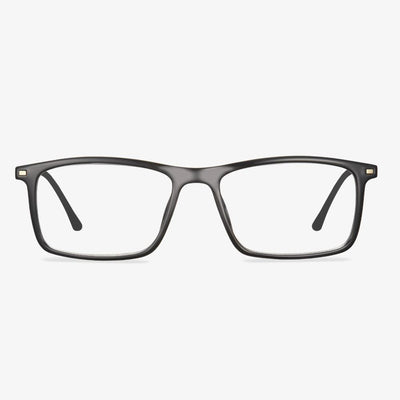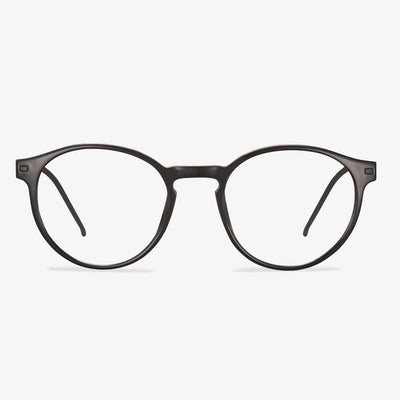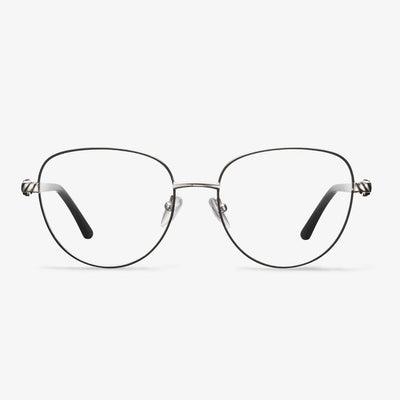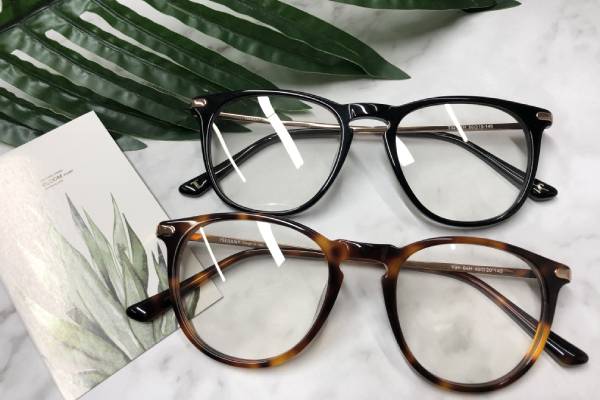Why are some glasses expensive and others cheap?
Lenses do not regulate vision, but some progressive lenses can help the ciliary muscles to adjust. The quality of the lens is mainly determined by the transmittance, the surface, the aspherical surface, the refractive index, the coating quality.
The higher the refractive index, the thinner the lens, and the more expensive the price, for some people with high degrees, the lenses also play an aesthetic role. Commonly used are green film, and some are purple film, gold film, etc. How much cheaper is a relative number, and there are many other factors to consider besides price.
What kind of lens is a progressive lens?
Progressive lenses are optical lenses designed for simultaneous correction of far, medium (for computer use), and near (for reading). They are Progressive Additional Lenses (PAL). The so-called progressive, The so-called progressive, is the use of polishing technology to achieve a gradual transition between the two focal lengths. The advantage of this design is that the wearer can see far and near objects alternately without taking off the glasses.
The Advantages of Trifocal Lenses
The greatest advantage of trifocal lenses is that they have three prescriptions in one, which means that not only do you not have to buy three separate pairs of glasses, but you also won’t have to constantly change them as you go about your day.
Another advantage of trifocal lenses is that in some cases, they offer a broader viewing area for near and intermediate-distance applications like reading and using the computer.
The origin of aspheric lens
The Visby glasses, unearthed in Gotland, Sweden, are the earliest aspheric lens found. The Vikings in the 11th century used it as a magnifying glass, and some of the best ones were made of silver, making them look like handicrafts. In 1667, Francis Smethwick grinds the first high-quality aspheric lenses and presents them to the Royal Society. That's a telescope with three aspheric elements. In 1956, Elgeet, which originally designed and manufactured optical instruments for the U.S. Navy, produced the world's first mass-produced aspheric lens for photography (Golden Navitar 12mm F1.2) for a 16mm film machine. Today, aspheric lenses are found in everything from tall telescopes to missile guidance systems to camera lenses. In the glasses we wear, the aspheric lens is familiar to consumers.
BLUPOND night driving glasses
TAC Semi-polarized Blue light goggles are designed to change your perspective to yellow with computer blue light polarization. Anti-glare high-definition vision blue-blocking glasses protect eyes from blue light and reduce the contrast of bright blue/white glare and flash. The anti-glare night glasses limit distortion. In addition to polarized driving glasses, you can receive a night vision glasses accessory set, with the EVA glasses hard case, screwdriver, sunglasses bag, microfiber cleaning cloth, glasses clip, and night driving glasses gift box.
Eyeglass pinches your nose.
Not only can a pair of glasses that pinch your nose be uncomfortable, but chronic stress can also lead to headaches or migraines. How you solve this problem depends on your frame material. If you're wearing a metal frame, just use your thumb to widen the plastic nose pad until the frame fits comfortably. If wearing plastic frames, after soaking the glasses arm in warm water for 30 to 60 seconds, gently press the glasses arm outward to make the glasses more comfortable. If your glasses continue to clamp your nose after adjustment, seek help from a professional optician.
What symptoms does myopia have?
Myopia is a problem related to the eye's ability to focus on distant objects. The manifestation of myopia is that blurred vision at a long distance. But near-distance vision is good. Early myopia often has long-distance vision fluctuation and squinting when looking at distant objects. Because looking close need not or less use an adjustment, and set function is weakened correspondingly. Those with high myopic have poor far vision, often accompanied by poor night vision, floaters, and other symptoms. Changes in the fundus of the eye can occur to varying degrees. It can form irregular shape white atrophy spots and so on.










































